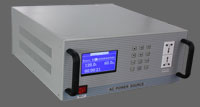Category

Reduction of Transformer Inrush Current
As per my knowledge, reduction in inrush current by transformer design changes (low flux density or increased impedance) is marginal. Leakage % impedance will not reduce inrush, but only air core inductance of the energized winding. Inrush current = (peak of phase voltage/ impedance consisting of air core inductance + winding resistance) x factor based on flux density. This is my experience as a transformer designer for nearly half a century. In transformer classics (see page 37 of Transformer Engineering -LF Blume of GE, 1951) where measures for reducing inrush current are discussed, never the above type of design changes are proposed as a solution. Pre charging etc were mentioned in such texts, but today controlled switching is the accepted solution to reduce inrush currents.
Some facts on modern power transformers compared to those of 30-40 years back. This may be contrary to the recordings in old transformer text books.
Some facts on modern power transformers compared to those of 30-40 years back. This may be contrary to the recordings in old transformer text books.
- Percentage of 2nd harmonics in inrush current has come down from 30-60 % to 5-15 %. This is due to changes in core material and construction (e.g. step lapp joints in core). This is some time creating problem in actuating the second harmonic restraint feature in differential relays, during switching on.
- No-load Transformer power factor has gone up- from 0.05-0.25 (see Transformer text by L F Blume, 1951) to 0.5-0.9. This happened as exciting VA/kg was 5-20 times earlier, but the reduction in W/kg is only half. Hence the improvement in no-load power factor.
- The no-load current of power transformers came down drastically - 0.1% (20 MVA) - 0.05 % (315 MVA) in a 1500 MVA 765 kV bank, the no-load current is only 0.03 % of full load current. Earlier days it was 10-20 times more.
- Transformers were experiencing inrush current for past 130 years, but failures from it rarely reported, unlike from short circuit currents. One reason may be inrush current depends on the point on voltage wave when switching occurs -max at voltage zero and negligible at voltage peak. Residual flux also varies depending on at which point on voltage wave, the switching off happened previously. This creates a doble probability for very low inrush peaks in most cases of switching. Unlike short circuit currents, inrush is only in one winding which reduces the stresses seen by winding drastically. Short circuited diodes are creating short circuit currents, in both windings.
- Inrush current as times of full load current comes down with KVA rating -in control transformers 20 times, distribution transformers, 12times, power transformers 8times and very large units, 5 times, in very large unis. In large units, you will see a flash over across the main tank flange joint bolts during switching on - from the large overflowing flux from winding. This will not be there always, but only when inrush peak is max. . Sometimes this may burn the painting.
- As I understand, flux will be lagging voltage by 90 degrees. The load current will be lagging voltage depending on power factor. Since the exciting current is so small, the current interruption will be at load current zero, the point on voltage wave at that moment may not be peak. Since I am not a breaker expert, I stand to be corrected.
Post a Comment:
You may also like:

